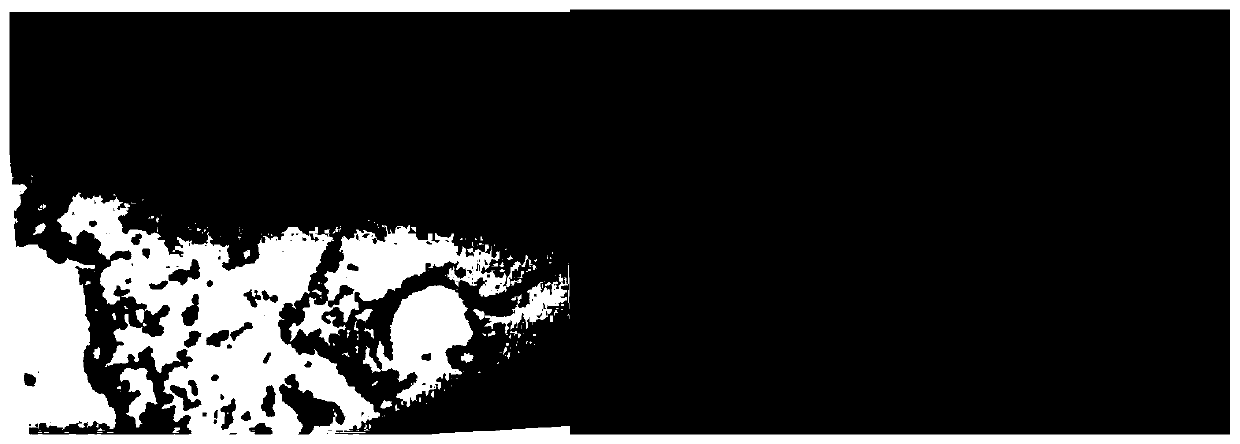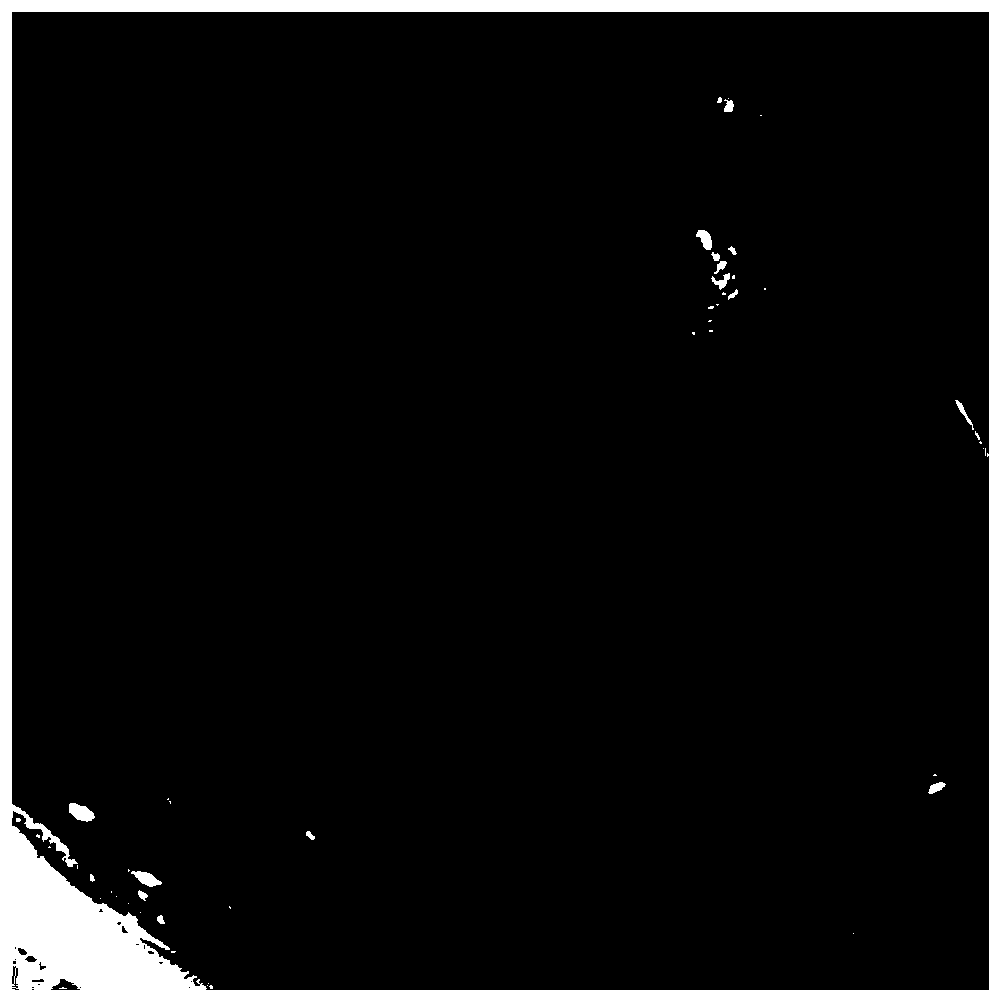Heavy-metal-resistant Cupriavdus sp. and preparation method and application thereof
A technology of copper greedy bacteria and heavy metals, applied in the field of preparation of copper greedy bacteria HXC-8 and its bacterial agent, can solve the problems of undisclosed copper greedy bacteria, and achieve the effects of improving stress resistance, slowing down stress, and increasing seed germination rate
- Summary
- Abstract
- Description
- Claims
- Application Information
AI Technical Summary
Problems solved by technology
Method used
Image
Examples
Embodiment 1
[0032] Embodiment one, the isolation and cultivation of Mimosa rhizobia
[0033] Collect the whole plant of Mimosa, wash the collected Mimosa with clean water, remove the soil clods and stems, select a large, plump, fresh root nodule at the root, wash away impurities, soak in 95% ethanol for 5 minutes, and then rinse with 0.1 % HgCl 2 The surface was sterilized for 5 minutes, and then rinsed 10 times with sterile water under sterile conditions.
[0034] In the case of aseptic operation, shake the sterile water flowed down from the root nodule for the last wash, pour a small amount into the YMA medium to spread evenly, and culture it upside down at 28°C for 3 to 5 days. If no colonies appear, it proves that the copper greedy bacteria have been cleaned before inoculation, otherwise, the cause of the colonies should be analyzed, and it should be verified whether the colonies that appear in the culture medium inoculated with copper greedy bacteria are rhizobia colonies.
[0035]...
Embodiment 2
[0037] Embodiment two, the Gram stain identification of bacterial strain HXC-8
[0038] The purified strain HXC-8 was identified by Gram staining method, and the identification result showed that it was in the shape of a red short rod, so it was determined to be a Gram-negative short bacillus. The specific identification steps are as follows:
[0039] (1) Use an inoculation loop to pick a small amount of bacteria in a single colony of round translucent milky white nasal mucus, and evenly spread it on a glass slide dripped with sterile water; at the same time, pick a little Bacillus subtilis, and spread it on the same drop Sterile water, as a control; spread the bacteria evenly, after natural drying, burn 2-3 times on the alcohol lamp to fix;
[0040] (2) Add crystal violet dyeing solution dropwise for 1-2 minutes, wash away the dyeing solution with fine water, and absorb residual water with filter paper;
[0041] (3) Mordant with iodine solution for 1 min, and washed with wa...
Embodiment 3
[0045] Example 3, 16S rDNA sequencing identification of bacterial strain HXC-8
[0046] 1. Genomic DNA Extraction
[0047] 1) Take the strains on the medium in a mortar and grind with liquid nitrogen next to the flame of an alcohol lamp.
[0048] 2) Put the ground bacteria into a 1.5ml centrifuge tube, mark the name of the strain, add 0.6mL TE (pH 8.0), and pipette evenly with a pipette tip to fully suspend the bacteria.
[0049] 3) Add 250 μL of 10% SDS, and gently invert to mix.
[0050] 4) Add 3 μL of proteinase K (20 ng / μL), mix gently, and bathe in 37° C. water for 1 hour.
[0051] 5) Add 150 μL 5mol / L NaCl and mix gently.
[0052] 6) Add 150 μL of 2% CTAB, mix gently, and bathe in water at 65° C. for 20 minutes.
[0053] 7) Centrifuge at room temperature at 12000rpm for 20min.
[0054] 8) Carefully pipette the supernatant into a new 1.5ml centrifuge tube, add an equal volume of isopropanol, mix thoroughly, place at room temperature for 30min, centrifuge at 12000rpm,...
PUM
 Login to View More
Login to View More Abstract
Description
Claims
Application Information
 Login to View More
Login to View More - R&D
- Intellectual Property
- Life Sciences
- Materials
- Tech Scout
- Unparalleled Data Quality
- Higher Quality Content
- 60% Fewer Hallucinations
Browse by: Latest US Patents, China's latest patents, Technical Efficacy Thesaurus, Application Domain, Technology Topic, Popular Technical Reports.
© 2025 PatSnap. All rights reserved.Legal|Privacy policy|Modern Slavery Act Transparency Statement|Sitemap|About US| Contact US: help@patsnap.com



